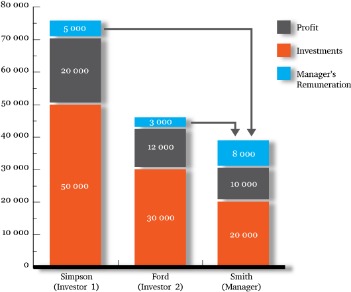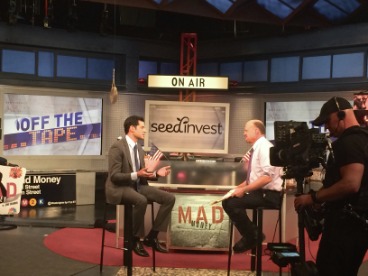Contents

To https://en.forexbrokerslist.site/ and handle formation O’Neil claims the handle should extend no longer than one-fifth to one-quarter the length of the cup. The handle will remain close to the prior highs, which will squeeze out the short-sellers and cause new buyers to enter the market. There isn’t a stock scanner setting you can use to find a cup and handle pattern, but the pattern is easy to recognize visually. If you set your stock scanner to meet your other trading needs, then you can flip through the results until you find a chart that looks like a cup and handle.

- Here, you should wait for the price to retest the now-support level and place a bullish trade.
- The right side of the handle rises higher than the left and the pattern slightly overestimates the extent of the bullish continuation after the breakout.
- Consequently any person acting on it does so entirely at their own risk.
- The tables turn once again when the decline stalls high in the broad trading range, giving way to narrow sideways action.
- The Cup and Handle pattern is where the price initially declines, then levels off and begins to rise again, thus resembling a cup with a handle.
A double top is shaped like an “’M” and signals a bearish reversal, as price has hit a resistance level twice and failed to gain more buying momentum. The bears have the upper hand here, and as they sell, prices will fall. ✅It is difficult to overestimate the importance of the classic continuation and reversal patterns. For a real trader trading on the Forex market, it is huge, because these patterns make it possible to predict the behaviour of the price. ⚠️If one of the trend continuation patterns appears in front of us on the chart, it means that the usual correction…
Set an Exit Strategy with The Cup and Handle Pattern
Making investments based on chart patterns is a norm nowadays as they help traders better understand technical analysis. The cup and handle indicator has long been used by traders to determine the direction in which an asset/stock may move. Additionally, it clearly defines the entry point, stop-loss, and target placement guidelines.

At times, the right side of the cup handle has a different height than the left. In this case, it is wise to use the smaller height and add it to the breakout point for a safer target. Traders can also use the larger height to achieve a more aggressive target. A stop-loss order saves traders if the price drops, even after a stock forms the cup and handle chart.
How To Trade the Cup and Handle Chart Pattern
Get Started Learn how you can make more money with IBD’s investing tools, top-performing stock lists, and educational content. For the weekly chart, the moving-average line traces 10 weeks’ worth of turnover. The handle should also show a downward slope along at least a portion of its price lows, not an upward one. This is why sifting through the charts of the market’s greatest winners is time well worth spent.
Thomas’ experience gives him expertise in a variety of areas including investments, retirement, insurance, and financial planning.
Do not infer or assume that any securities, sectors or markets described in this article were or will be profitable. Historical or hypothetical performance results are presented for illustrative purposes only. U.S. Government Required Disclaimer — Stocks, ETFs, mutual funds, commodities, bonds, futures, options and any securities trading has large potential rewards, but also a large potential risk.

Hartalega As Topglove And supermx possible forming a triangle BUT a variant as cup and handle or VCP pattern. This is used in conjunction with the Stocks Over Coffee Podcast on Technical Education Cup with Handles. Apple is the largest company in the world with a market cap of 2 trillion.
What does a Cup and Handle pattern indicate?
For more information on risks and conflicts of interest, see these disclosures. Another uptrend doesn’t reach the last high point so the stock price levels off or dips slightly, forming the handle. Volume — as prices decline, the volume should decrease and stay low at the base of the cup until the stock rises and goes back to the previous high point. A cup and handle technical pattern looks like a teacup with a handle with the cup in the shape of the U and the handle extending in a downward direction on the right side. It forms after a price rally, and its depth should be 30-50% of the rally preceding it.
Most of the handle should be above the 50-day moving average. Pullback not too steep – If in an uptrend, the bottom of the cup should be no more than 35% below the high. Cups that are 40-49% deep is too wide, which creates too much overhead price resistance. Measuring the distance is a key step to validating the pattern.
In this case, a trader should set the Stop Loss order slightly below the handle’s trendline. A profit target will be at the resistance trend line, connecting two highs of the cup. A Cup and Handle price pattern is a technical chart setup that resembles a cup with a handle. The cup has a «u» shape, and the handle is a slight downward correction. Typically, the “cup and handle” is a bullish pattern and can be considered a continuation and reversal formation. To identify the cup and handle pattern, start by following the price movements on a chart.
There is also an upside-down cup and handle pattern, called the inverted or reverse cup and handle. This is a bearish pattern and it looks different to the traditional cup and handle. Above is an example of two cup and handles that formed in the Big Tech share basket on our Next Generation trading platform. The pattern on the left is more complex as the cup pattern is wavy and harder to identify. The pattern on the right is more traditional, with a clear cup shape, followed by a handle breakout to the upside. The main reason for this is that bear markets are characterized by high levels of fear and uncertainty and investors tend to sell on any break-outs or rallies.

Depth — the cup should represent a teacup rather than a deep mug, with a handle formed at the top section of the cup. Sign up for Market Minutes to receive powerful market analysis, top trade ideas, & helpful blog updates. Then, you can add the rest of your position size after receiving confirmation of the handle breakout.
With derivatives trading, you don’t own the underlying asset, which means you can go long or short . Opponents of the V-bottom argue that prices don’t stabilize before bottoming and believe the price may drop back to test that level. But, ultimately, if the price breaks above the handle, it signals an upside move. A V-bottom, where the price drops and then sharply rallies, may also form a cup.
However, note that https://forex-trend.net/ and handle pattern failure may occur more frequently in overall bearish markets. Always use stops to minimize risk in case of a failed cup and handle pattern. In order to prevent a false signal, it’s important to receive cup and handle pattern confirmation before buying. Use this simple, 10-step checklist below to discover how to identify a cup and handle pattern—the right way. The cup and handle pattern is a common method you can use to analyse the trend of assets. You can use it to analyse stocks, currencies, bonds, commodities, and index funds among others.
The https://topforexnews.org/ is formed when there’s a price wave down, which is then followed by a stabilization period, followed again by a rally of approximately the same size as the prior trend. This price action is what forms the identifying cup and handle shape. A cup and handle pattern occurs when the underlying asset forms a chart that resembles a cup in the shape of a U, and a handle represented by a slight downward trend after the cup. On the charts it looks like an upside down cup with the price of an asset on a downward trajectory moving up, stabilizing and then moving down again, followed by a handle pointing upwards. Most of the same general rules, such as the handle not exceeding 1/3rd of the cup, still apply. The price of the asset is expected to drop after the pattern formation is complete.
Basing refers to a consolidation in the price of a security, usually after a downtrend, before it begins its bullish phase. Investment services and the Brokerage Accounts for treasury securities are offered by Jiko Securities, Inc. (“JSI”). Explanatory brochure available upon request or at Past performance is not indicative of future performance. See FINRA BrokerCheck and Jiko U.S. Treasuries Risk Disclosures.